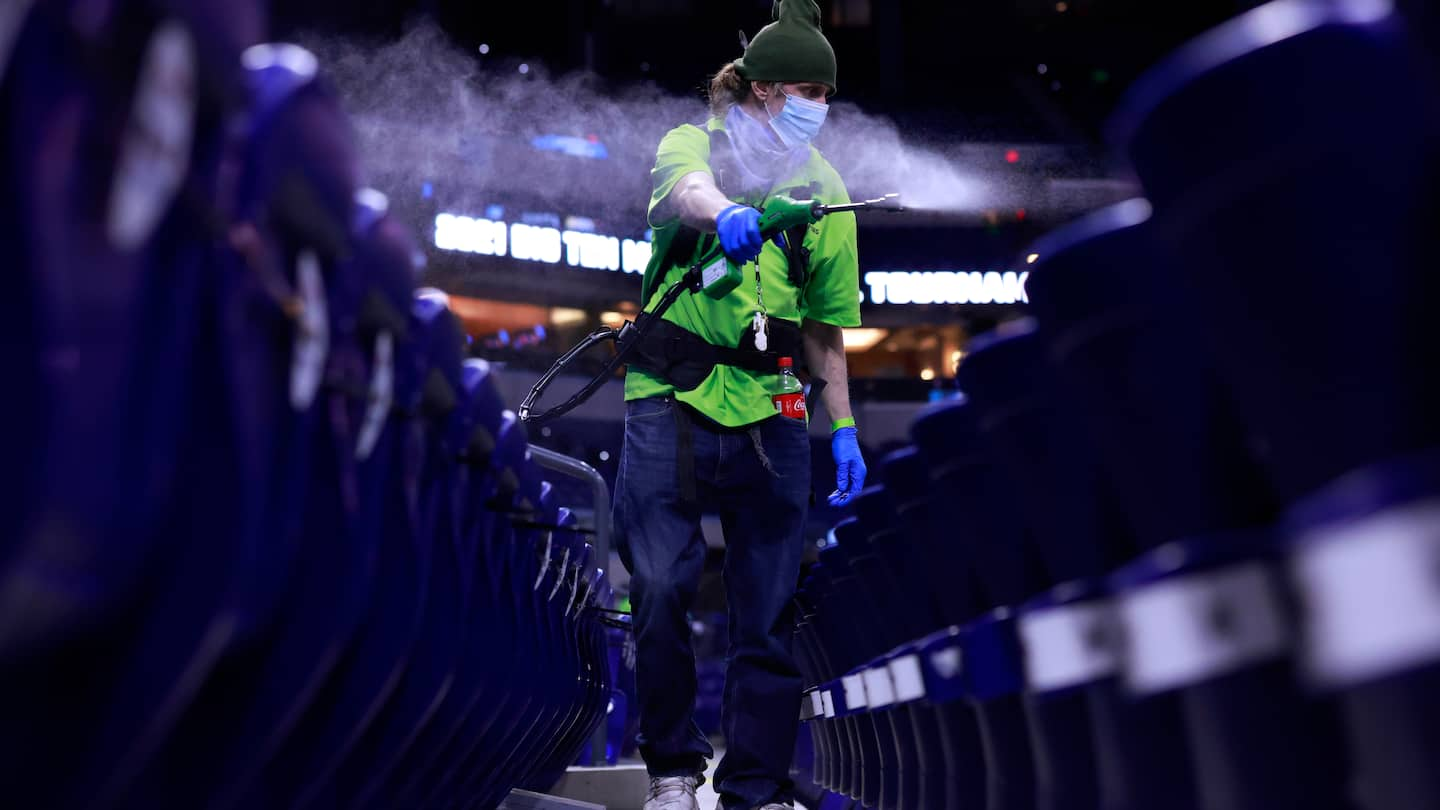March Madness usually soothes our worries. This NCAA tournament collides with them.

In the past, this competition has saved college basketball from itself. No problem has been immune to its thrills. It has resuscitated the sport amid times of corruption, hypocrisy, mediocrity, debate over player compensation and lack of regular season buzz. It has upstaged most drama because of the tournament’s brilliant structure, gambling allure and penchant for unpredictability. But this is a year of simple aspiration. Merely having March Madness is miraculous enough.
After going more than 700 days without crowning a champion, the NCAA tournament will be content celebrating its existence. A covid-19 disruption ensured that won’t be taken for granted again. The event’s cancellation triggered our pandemic sports misery, but while other sports were able to delay their championships and salvage their seasons, college basketball suffered in silence. Many others have made this claim, but hoops can say it with the most conviction: No major, revenue-generating sport lost more because of the coronavirus’s disturbance.
You can measure it in money; intense interest helps each tournament rake in nearly $1 billion now. But also lost was relevance, goodwill, community and passion. The effect of last season’s abrupt ending was evident throughout the disjointed 2020-21 regular season. Despite featuring a dominant, undefeated No. 1 team in Gonzaga and an entertaining mix of fabulous freshmen and sensational upperclassmen across the nation, the season fell flat. There was no energy. There couldn’t be many fans. There was no transcendent significance, even though Gonzaga may prove to be an all-time team and already qualifies as a historic offensive wonder.
The Bulldogs are a No. 1 seed for the fourth time in the past eight NCAA tournaments, yet for many, they are a 26-0 mystery. That’s not because they just walloped anonymous competition. As usual, they played a frontloaded schedule, earning nonconference victories over Kansas, Auburn, West Virginia, Iowa and Virginia. The Mountaineers were the only of those Power Five schools that kept the margin in single digits. In fact, that was the only game Gonzaga didn’t win by double figures, though they did have to rally from a 53-41 deficit in the West Coast Conference tournament final to beat BYU, 88-78.
That close call wasn’t all that alarming or revelatory. It was mostly a good thing that the Zags got a good run, for a change. The season has been that smooth. As a team, they shoot a preposterous 55.1 percent. They have all-Americans at point guard (Jalen Suggs), on the wing (Corey Kispert) and in the post (Drew Timme). They’re not as deep, particularly down low, as some of their recent teams, but depth can’t be considered a weakness, either. They’re so great they inspired Jim Boeheim to make the comment of the year.
“I don’t think anyone can beat Gonzaga,” the Syracuse coach said in January. “I’ve never seen a team [so far ahead] since UCLA when John Wooden was there.”
Still, Gonzaga is an underrated giant. Even during a normal year, big conference bias would’ve been an issue. It’s something the school has fought for more than two decades. This time, however, pandemic anxiety stands as the greatest opponent. That stress is undefeated, too. The story of the college basketball season has been, unfortunately, the same that every other sport endured: managing outbreaks, postponements, cancellations, moral and practical questions about how to handle the turbulence, doubt about reaching the finish line.
Just last week, Gonzaga Coach Mark Few pivoted during his postgame remarks to express mixed emotions about this supposedly unbeaten experience. “At the same time, hey, I’m really, really frustrated,” he said.
He wishes fans on a largely locked-down West Coast could’ve seen this team play. McCarthey Athletic Center, nicknamed the Kennel, would’ve been raucous as usual. But the Zags would’ve been an incredible traveling act as well. It’s strange to experience a dream season during a nightmarish time.
“Yeah, it’s been disappointing here out west, and it’s a shame that more fans haven’t been able to see this team play,” Few said. “But that’s just the way it is, but I am proud of how our guys have worked their way through it.”
March Madness usually soothes concerns. This one collides with them. As the sport attempts to recover, you can’t avoid assessing the damage that covid-19 has done, as well as the questions about college hoops’ future with a pending Supreme Court case involving player compensation and several scandalous programs bracing for NCAA sanctions.
In an ideal world, this tournament would represent the end of our year-long sports slog. It would signify the last sterile event, the last major sports crawling to completion. It would mark the beginning of an exciting recovery period as millions of Americans get vaccinated and hope increases for large crowds. Maybe the near future is that promising and outdoor sports such as baseball will be the initial beneficiaries. However, in college hoops, the path to a new normal doesn’t seem so clear.
After a handful of prominent teams were forced to exit their conference tournaments because of positive coronavirus tests, one of the last sports to crown a covid champion still faces a challenge to finish the season without chaos. Even if it manages to persist, there’s the question of how compelling the tournament will be to a casual audience during a year in which Gonzaga and Baylor are the favorites and blue bloods such as Duke and Kentucky are nowhere to be found.
The Big Dance can be neither a celebration nor a great distraction this year. It’s more of a placeholder. An exciting and memorable tournament would do wonders for the sport, but at a time of muted joy, the undercurrent of trepidation will remain for a while longer.






